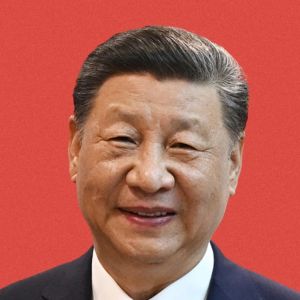
China kept its benchmark lending rates unchanged on Monday for the sixth month in a row, locking in the one-year loan prime rate at 3.1% and the five-year rate at 3.6%. This came as no surprise to financial watchers—87% of the 31 participants in a Reuters poll had already expected no changes to the rates. The freeze came even after China posted stronger-than-expected GDP growth of 5.4% in the first quarter. That surprise bump gave Beijing room to stall on broad monetary easing, even as markets braced for new stimulus down the road. The underlying fear? The Sino-U.S. trade war still poses a massive threat, and policymakers don’t want to crash the yuan or destroy bank profits while trying to keep the economy alive. The central bank held back from slashing rates to protect both the currency and lenders’ profit margins. With interest margins narrowing, cutting rates would mean banks make even less on their loans—bad news for an already tense financial system. On top of that, the yuan has been shaky, and further easing might weaken it more, opening a whole new can of economic shit China doesn’t want to deal with. China warns allies as U.S. pushes tariff pressure While Beijing delayed pulling any monetary levers, the trade war escalated. U.S. President Donald Trump, now back in the White House, paused new tariff hikes on other countries for 90 days. But Washington raised tariffs on Chinese goods to 145%, wanting to squeeze the country even harder. Reports say Trump wants to use these negotiations to pressure allies to scale back business with China . In response, China’s Ministry of Commerce made it clear they won’t just sit there. They warned that any country that cuts a deal with the U.S. that harms China’s interests will face countermeasures. “China firmly opposes any party reaching a deal at the expense of China’s interests. If this happens, China will not accept it and will resolutely take reciprocal countermeasures,” the ministry said in a statement. On top of that, economists from ING said the Loan Prime Rate won’t drop unless the central bank first cuts the seven-day reverse repo rate. That shorter-term rate hasn’t been touched either. ING pointed to low inflation and strong external pressure as good reasons to ease, but added that currency stability might make the People’s Bank of China wait until the U.S. Federal Reserve cuts its own rates before making a move. Despite the Q1 numbers, markets aren’t buying the hype. Global investment banks have already started slashing their China GDP forecasts for the rest of the year. The worry is that the early export data is fake calm—many companies rushed out shipments before the tariffs hit, so the numbers don’t yet reflect the real damage. That means the storm is still coming, and nobody wants to be caught in it unprepared. The Ministry of Commerce also warned about a collapse in global trade norms. They said countries were sliding back into a “law of the jungle” where power beats rules. The same statement said China wants to cooperate with others to “defend international fairness and justice,” even as it called out the U.S. for using “unilateral bullying” and abusing tariffs to force its will. Cryptopolitan Academy: Coming Soon - A New Way to Earn Passive Income with DeFi in 2025. Learn More


